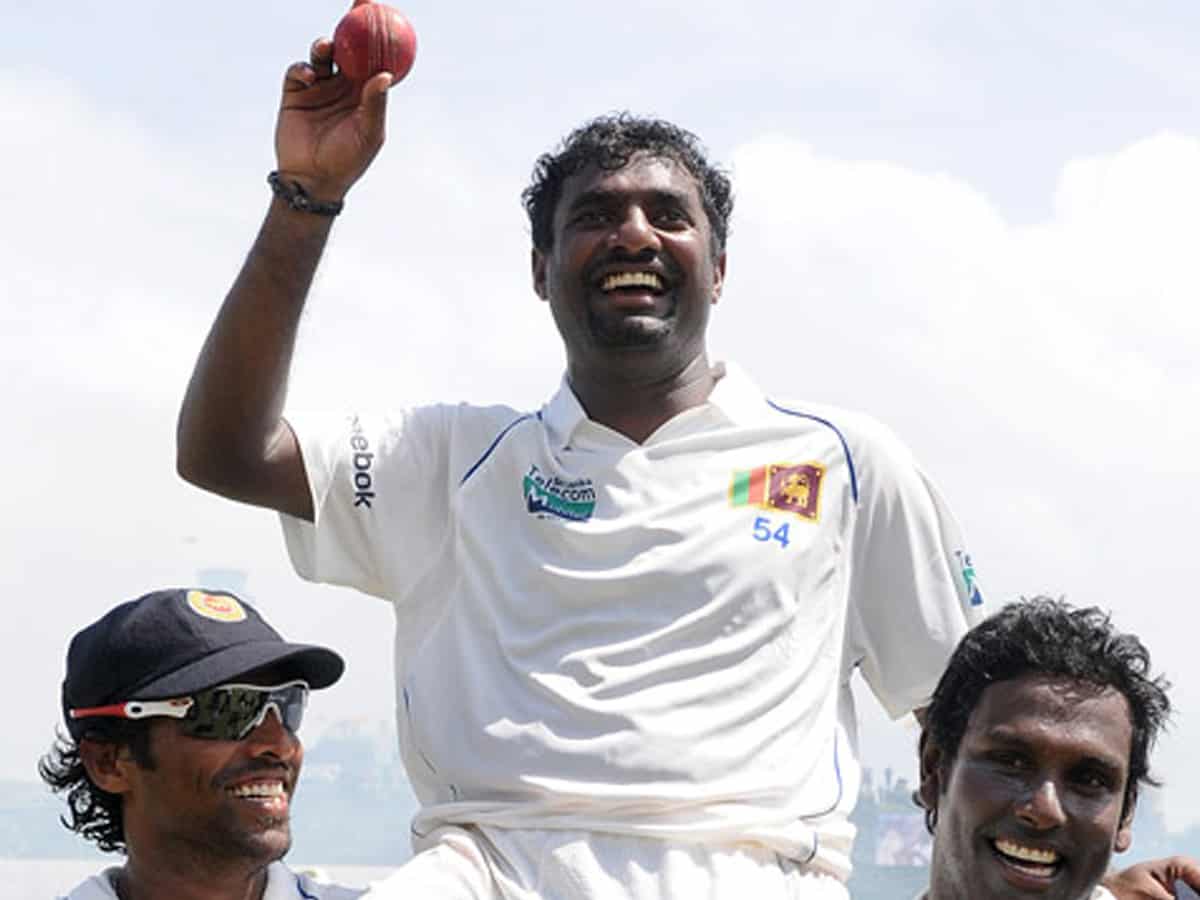
Sri Lankan spin wizard, Muttiah Muralitharan, the only bowler in cricket history to take 800 Test wickets, completed half a century in his life on April 17th. With an average of just over six wickets per Test match, he is widely regarded as the greatest bowler to ever play international cricket. To add to that, he has also taken 534 ODI wickets. It is a phenomenal feat that may perhaps never be equaled or broken.
Muralitharan reclaimed the record of being the highest wicket-taker in Test cricket when he overtook the then record holder Shane Warne in December 2007. Muralitharan had previously held the record when he surpassed Courtney Walsh’s 519 wickets in 2004, but thereafter he suffered an injury which enabled Warne to overtake his tally. But after regaining full fitness, Murali got into action and reclaimed the coveted record.
The beginning of Murali’s fantastic career was a quiet one. He took three wickets in his first Test at the Premadasa Stadium against Australia in 1992. Murali was lucky to have played alongside some of the great legends of Sri Lankan cricket such as Arjuna Ranatunga, Sanath Jayasuriya and Chaminda Vaas. He must have learnt a lot from them.
When Murali was a beginner, Kapil Dev helped him too. Kapil once told Murali that he could be easily read. “After seeing a few deliveries, I can hit every one of your deliveries for a six,” said Kapil. “Why so?” asked Murali. “You are turning the ball too much every time. You shouldn’t put so much turn into every ball. Introduce more variety. Make it difficult for the batsmen to guess what the ball will do,” Kapil advised.
Murali embraced all the advice of his seniors and had a highly successful career. Eventually he retired from Test cricket after claiming his 800th Test victim (Hyderabad’s Pragyan Ojha) on 22 July 2010 off the final ball of his last Test match. It was a dramatic end to a great Test career. Muralitharan was rated the greatest Test match bowler by Wisden in 2002, and then in 2017 he was the first Sri Lankan cricketer to be inducted into the ICC Cricket Hall of Fame. In Tests Murali was the topper and in ODIs too he was the number one.
Ranatunga once said: “Muralitharan is an unbelievable bowler who is to be seen only once in 100 years. It was important that we had him on our side. We needed him to get wickets and he always gave us results.” On two occasions Murali took nine wickets in one innings. Once against England and later against Zimbabwe.
But Murali’s outstanding career has had its share of controversies as well. Mostly because of his unusual bowling action which some have termed illegal and unfair. One of his strongest critics has been former India captain and spin bowling legend Bishen Singh Bedi. According to Bedi, Murali did not bowl properly and was definitely a thrower.
However, after in-depth scientific studies, researchers recommended that a 15 degree elbow extension be used to define a cutoff point between a legal bowling action and an illegal one. A panel of Test players including Aravinda de Silva, Angus Fraser, Michael Holding and several others, with the assistance of several biomechanical experts, stated that 99% of all bowlers in the history of cricket straighten their arms when bowling.
Explaining how the figure of 15 degrees was arrived at, Angus Fraser, himself a former fast bowler, said: “That is the point where in biomechanics, straightening becomes visible. It is difficult for the naked eye to see less than 15 degrees in a bowler’s action. But once you go beyond 15 degrees you get into an area which gives you an unfair advantage and you are breaking the law.”
In an article Cricinfo has written the following lines which aptly describe the ups and downs of Murali’s career: “Perhaps no cricketer since Douglas Jardine has polarised opinion quite like Murali. For the believers, he’s among the greatest to ever spin a ball. For the doubters, he’s a charlatan undeserving of the game’s greatest records. What was undeniable was his ability to turn the ball sharply on just about any surface. Whether Sri Lanka played at home or overseas, Murali was the go-to man for half a dozen captains. He seldom disappointed his skipper and his team.”
The other controversy had to do with his ethnic Tamil background. When the separatist movement in Sri Lanka was at its peak, his father Sinnasamy was injured in an attack by Sinhalese mobs and the biscuit manufacturing factory owned by their family was vandalised. It was in the compound of this factory named Luckyland Biscuits, that Murali began playing cricket when he was a child.
Recently a biopic film on his life ran into controversy because of political issues. But Murali has carefully steered clear of political turmoil, preferring to focus on cricket throughout his life. However, at the same time he has shown concern for the less privileged. After the 2004 tsunami, he helped to construct hundreds of homes for those who had been rendered homeless and his involvement in charity work is well known. Today Murali’s name deservedly shines as one of the most illustrious cricket stars that the island nation has produced.

